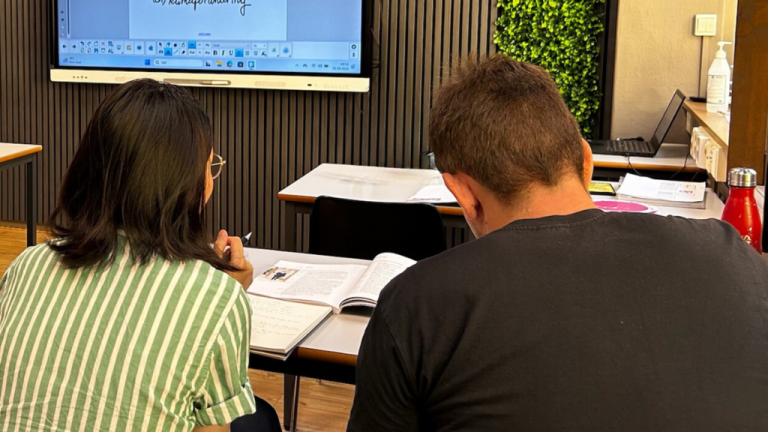‘Så’ in Norwegian and how to use it!

Learning Norwegian often brings surprises, and one of those is the little word “så.” Small but versatile, “så” changes its meaning depending on how it’s used. In this post, we’ll explore its main roles, like how it works in sentences as an adverb, conjunction, and more. Recognizing the function of the word is essential to know where you place the verb. Whether you’re just starting out or looking to polish your skills, understanding “så” will add depth to your Norwegian. Let’s dive in and discover the power of this simple word!
Så in complete sentences
Så as an adverb
In complete sentences, så can act as an adverb, described in more detail as a time adverb. This usage often occurs in chronological narratives. The meaning roughly corresponds to the adverb “deretter”, (afterwards, then, later). The adverb så opens a complete sentence (en helsetning) and thus comes first in the sentence. The verb follows the adverb (så), followed by the subject:
_____________________________________________________________

De jobbet til klokka fire. Så gikk de ut for å spise.
“They worked until four o’clock. Then they went out to eat.”
As an adverb of time så is often combined with the conjunction og (and) or men (but). Note that the conjunction and the adverb are always written separately. In Norwegian, conjunctions are in place zero. However, the adverb will still be in the first place. Thus, the verb is still in the second place:
De jobbet til klokka fire, og så gikk de ut for å spise.
“They worked until four o’clock. and then they went out to eat.”
Jeg skal på fotballtrening, men så kan jeg treffe deg.
“I’m going to soccer practice, but I can meet you after.”
Så as a conjunction
Så may also be used as a conjunction. Used in this way, så opens a complete sentence, similarly the adverb så. As a conjunction, så expresses result, consequence or conclusion of the preceding. The meaning her is roughly equivalent to the adverb “derfor” (therefore). When så used in this way, we always use a comma before the conjunction. A very important different between så used as an adverb and as a conjunction is the word order. In Norwegian, we always put the subject after a conjunction, followed by a verb:
_____________________________________________________________

De var sultne, så de gikk ut for å spise.
“They were hungry, so they went out to eat.”
Jeg skal på fotballtrening, så jeg kan ikke treffe deg ennå.
“I’m going to soccer practice, so I can’t meet you yet.”
_____________________________________________________________
You can also substitute så with og (and) without the sentence becoming ungrammatical:
De var sultne, og de gikk ut for å spise.
“They were hungry and they went out to eat.”
Så in subordinate clauses
Now we will have a look on så in subordinate clauses. In these cases, så is used as a subjunction to start/lead a subordinate clause. Note that the word order is different in subordinate clauses. Moreover, there is not a comma between the clauses when the subordinate clause is placed at the end of the sentence. Etter subjunksjonen har vi subjektet, og verbet kommer etter subjektet. Setningsadverbialer som ikke, aldri, alltid, ofte, også etc., kommer før verbalet i leddsetninger. Nå skal vi se på de to ulike betydningene av så som subjunksjon.
Subjunction: Purpose
Så is used as a subjunction in sentences of purpose. Equivalent to the subjunction “for at” (so that). Note that there is no comma (,) before the subordinate clause.

“They wanted to move to make things better for the children.”
Subjunksjon: Consequences
Så is also used in sentences which mark consequences. Equivalent to the subjunction “slik at”.

“They screamed so that we couldn’t hear anything.”
As you can see in the last sentence, the negation “ikke” comes before the verb in the clause.
In sentences which mark a consequence, we often use så – at with an adjective or adverb between:

De var så trøtte at de ikke kunne stå på beina.
“They were so sleepy that they couldn’t stay on their feet.”
Han snakket så fort at de ikke kunne skjønne noe.
“He spoke so quickly that they could not understand anything.”
Other ways to use så
Below you’ll find a short list of other frequently used functions of så.
1. Adverb
a) Dertil/dessuten (Besides/in addition):
Grønnsaker er godt, og så er det sunt.
“Vegetables are delicious, and also they’re healthy.”
b) On degree:
In this usage, så comes before an adjective and an adverb to mark degree:

2. Enn:
Han lover hva enn det skal være.
Han lover hva det så skal være.
“He will promise whatever it could be (whatever he can).”
3. Complete sentence conjunction
Does not follow another whole sentence, but hints at a further context:
Så du tviler på det jeg sier!
“So you’re doubting what I’m saying!”
Så vi kan ikke få mer hjelp?
“So we can’t get more help?”
4. Comparative subjunction:
To compare two things, we use the expression så – som:

“This is not as easy as I thought.”
It can be difficult to separate the different functions of så, especially when you’re starting out learning Norwegian. One tip can be to consider the meaning synonyms that we have written above. What word could you use to replace så? What is the sentence trying to explain? Does it have to with time? Consequence? Purpose?
Now you can begin practicing using så in complete sentences and subordinate clauses!
Good luck!
Written by Bahra Rashidi, Norwegian teacher at Alfaskolen.
Tags:


